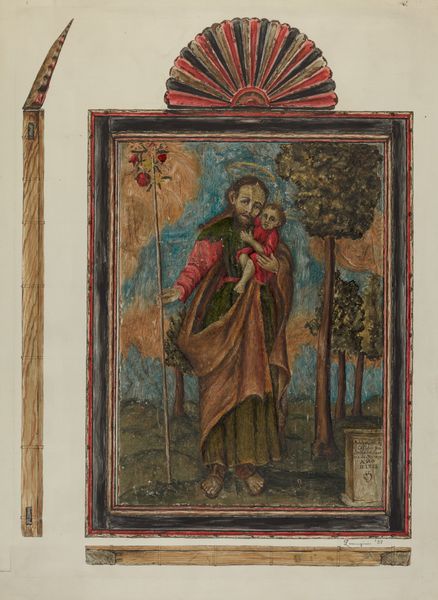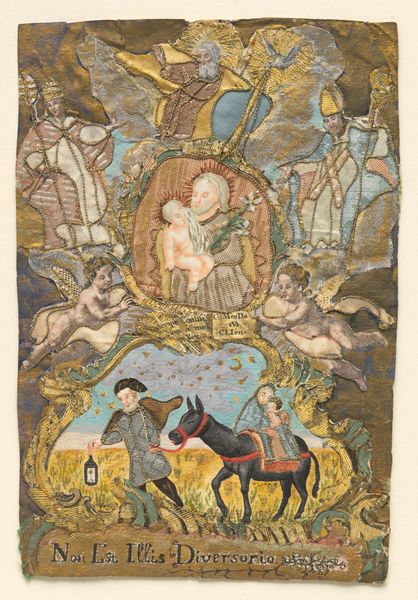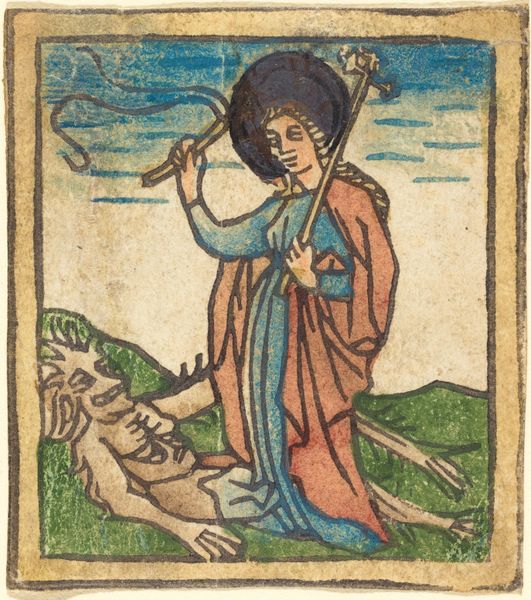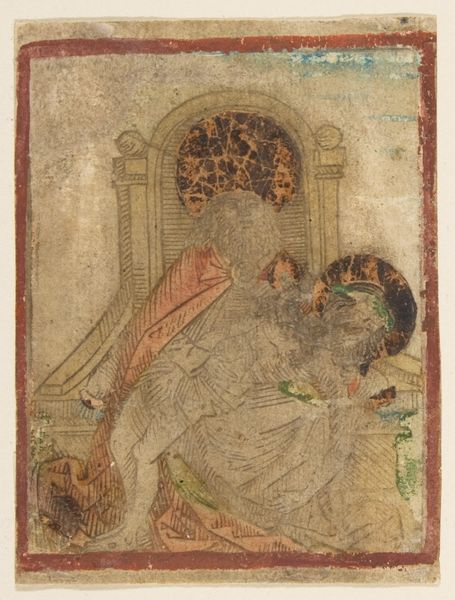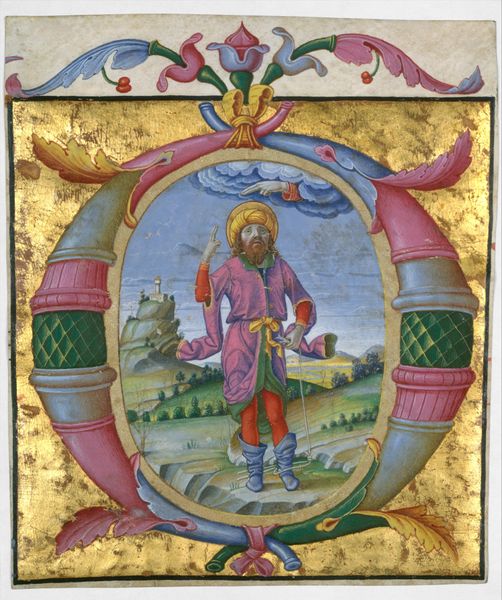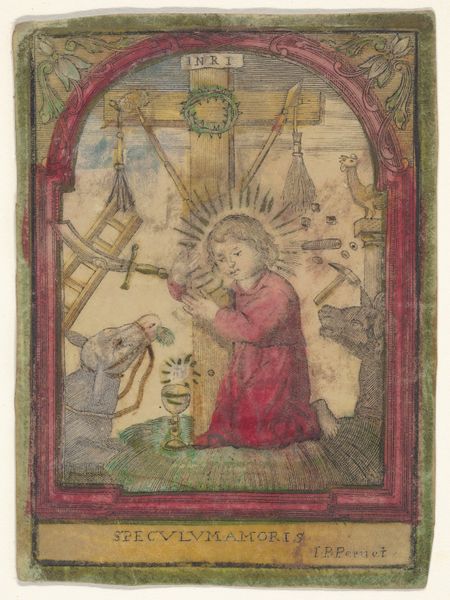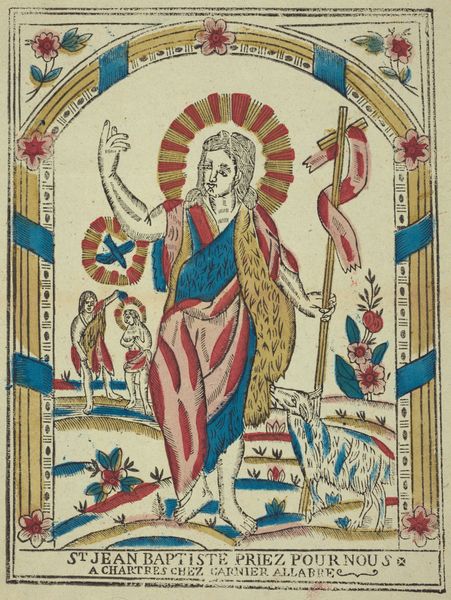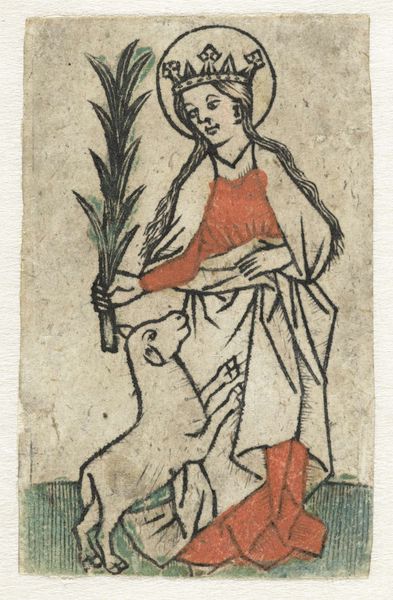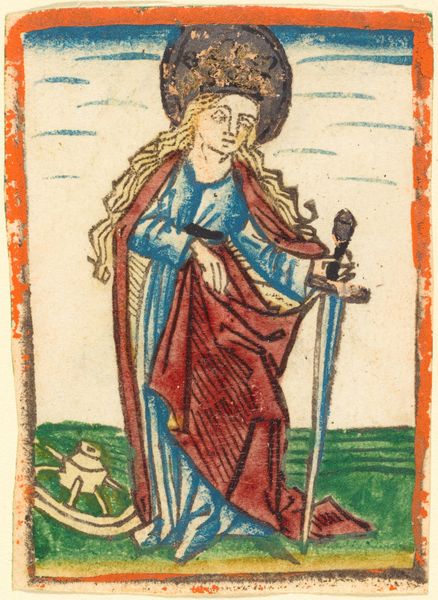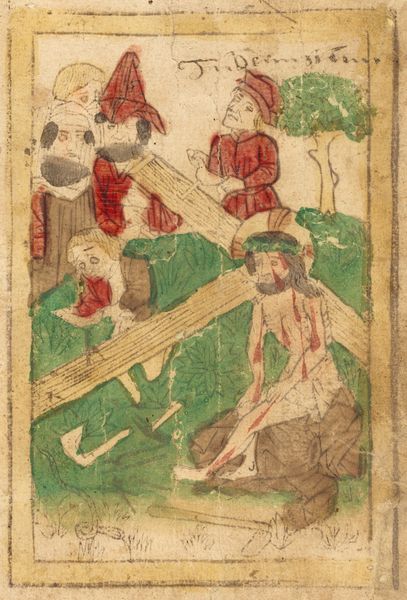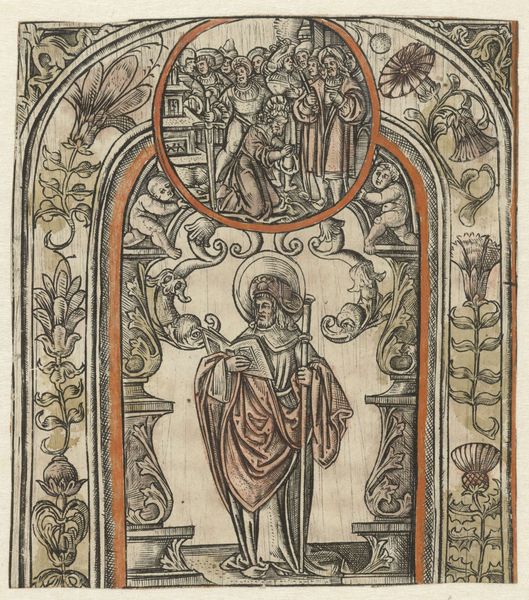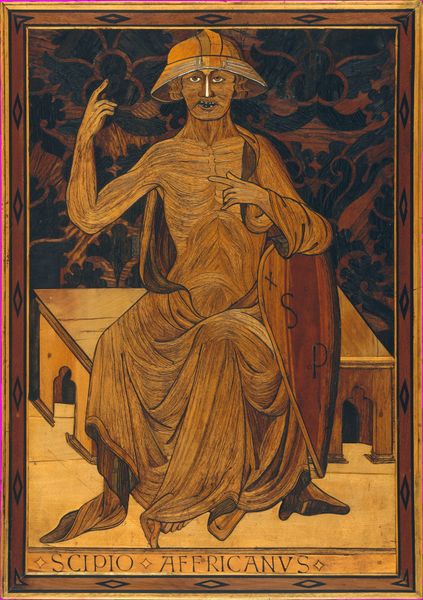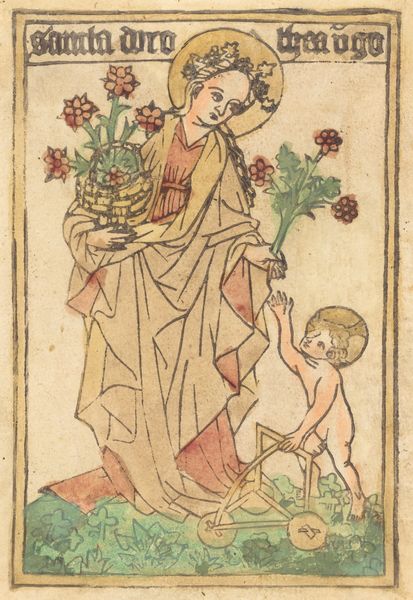
drawing, watercolor, mural
#
drawing
#
water colours
#
narrative-art
#
arts-&-crafts-movement
#
figuration
#
watercolor
#
symbolism
#
history-painting
#
mural
Dimensions: 73 3/4 × 29 7/8 × 1/2 in. (187.3 × 75.9 × 1.3 cm)
Copyright: Public Domain
Editor: Phoebe Anna Traquair’s "The Redemption of Mankind," created around 1887 using watercolor, presents such a complex visual narrative. Its vertical composition and soft hues give it a dreamlike quality. What do you see in this piece, looking at it with an eye toward cultural memory? Curator: This artwork is just brimming with symbolic potential. Look at the layering of scenes: the Nativity, the angels, and what appears to be a deposition. It speaks volumes about cycles of life, death, and rebirth within a Christian context, wouldn’t you agree? What do you make of the specific inclusion and positioning of those individual figures? Editor: The circular framing of the Virgin and Child almost seems to isolate them, highlighting the sanctity of motherhood, while the lower scene of mourning suggests sacrifice and the painful realities of mortality. Do you think Traquair aimed to soften the harsher elements of these stories? Curator: Possibly, yet, I’d also suggest it could also underscore those elements by contrasting tenderness with anguish. Notice how Traquair uses color to build her visual vocabulary of emotions, repeating shades and motifs to link different parts of the composition into a harmonious yet powerfully affective whole. Where else does her distinctive visual "language" stand out to you? Editor: I see it now! The red tones, echoing throughout, connect themes of love and sacrifice, uniting figures across different stages of Christ’s life, just like those repeating rose motifs along with the ox! Curator: Exactly! It demonstrates the power of shared symbols to bridge time and emotional spaces. Hopefully you now recognize how powerful repeated colors or forms or objects are for unifying art’s narrative qualities, in the present moment but across eons, too! Editor: Definitely. Thank you so much. It’s been an eye-opening journey into how imagery conveys deep cultural narratives, reflecting shared belief systems.
Comments
minneapolisinstituteofart almost 2 years ago
⋮
Phoebe Anna Traquair was born in Dublin, Ireland and moved to Edinburgh in 1873 where she built a flourishing career as an artist. Today she is recognized as the first professional woman artist of modern Scotland, and one of the first women admitted to the Scottish Royal Academy (1920). Traquair worked in a variety of media: embroidery, enamelwork, furniture decoration, easel painting, manuscript illumination, bookbinding, and mural decoration. The Redemption of Mankind is one of only twelve known embroideries designed and executed by Traquair. The subject of the proposed embroidery – Christian redemption – followed from themes developed in her first public mural project, the mortuary chapel of the Royal Hospital for Sick Children (1885-6). Traquair inked the embroidery design on the ground fabric and worked the stitches entirely on her own. All told, it took eighteen to twenty months to complete and overlapped with the painting of the Song School at St Mary’s Episcopal Cathedral, a project which carried forth the themes of redemption and salvation.
Join the conversation
Join millions of artists and users on Artera today and experience the ultimate creative platform.
